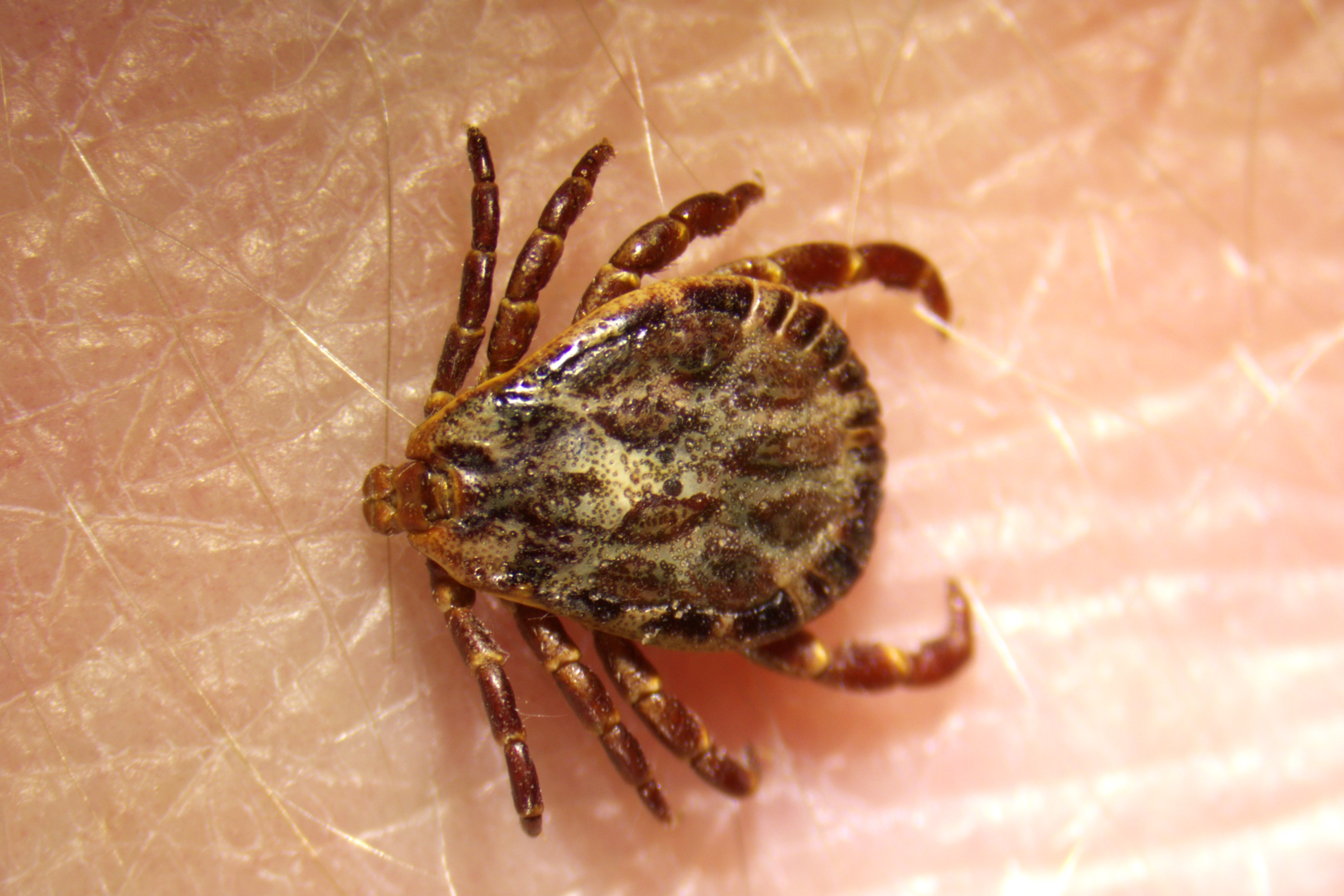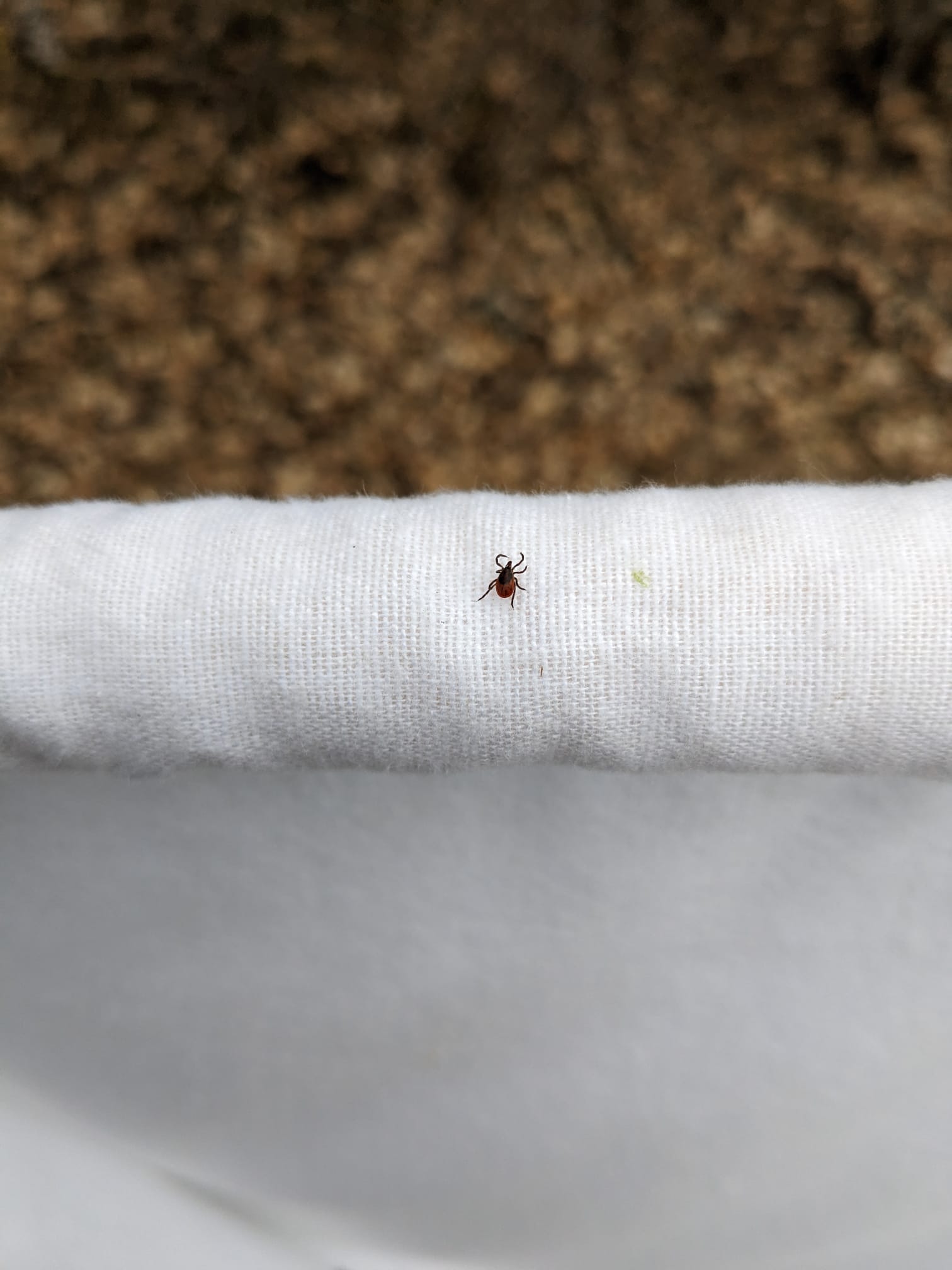The National Veterinary Institute (SVA) in Sweden, launched the new web tool Rapportera fästing – Report Tick – at the beginning of May. By the end of June, over 13,000 reports of tick finds had come from all over the country. The county of Västra Götaland came up on top for the number of reports sent in, followed by the counties of Stockholm and Skåne.
The Swedish common tick (Ixodes ricinus) is now established over large parts of Sweden, also in the inland of Norrland where ticks are rarely seen.
We are currently working intensively on studying images and ticks that have been submitted to SVA. We have received a couple of interesting finds of Dermacentor reticulatus from Västra Götaland County and Stockholm County, and Rhipicephalus sanguineus from Västerbotten County. These ticks are not endemic in Sweden, but Dermacentor reticulatus is expected to be establish permanently in the near future with the warmer climate. The species is already found on the other side of the Baltic Sea and in colder areas than Sweden, for example in parts of Russia.

Giulio Grandi
Researcher at SVA

With heat comes new tick species
It is predicted to be a hot and dry summer in Sweden this year. This heat wave can cause us to be visited by Hyalomma marginatum. This tick species hitchhikes with migratory birds from warmer latitudes. Our changing climate may mean that the H. marginatum has the conditions to develop into the adult stage and reproduce in northern Europe.
Host animals for an adult H. marginatum are usually large animals such as horses and cattle. Horse owners and farmers should therefore pay extra attention and check on their animals during the tick season. The tick is usually found on the animal’s back, at the base of the tail, in the groin, around the udder and around the genitals.
We need to evaluate the risks of the extended geographical spread of these tick species and the infectious agents that can follow with it. By monitoring exotic tick species in Sweden, we can get an early warning signal that we need to be aware of new infectious agents that can cause disease in both animals and humans

Anna Omazic
Researcher at SVA and partner coordinator
Host animals for an adult H. marginatum are usually large animals such as horses and cattle. Horse owners and farmers should therefore pay extra attention and check on their animals during the tick season. The tick is usually found on the animal’s back, at the base of the tail, in the groin, around the udder and around the genitals.

Keep sending tick pictures
The current results are proof of how effective collaboration between SVA’s staff and the public can contribute to the research community. By submitting reports, you contribute to the research on tick species and tick-borne diseases in Sweden. As a next step, an image analysis model will be added to the tool. Using artificial intelligence, the images will be reviewed and also generate a direct response to the submitter. However, multiple images of ticks are needed to train the model.
We are grateful if everyone tries to take a photo of the tick in connection with the reporting. All images submitted are used to train the model for the next tick season. We are so happy about the fantastic response so far.





